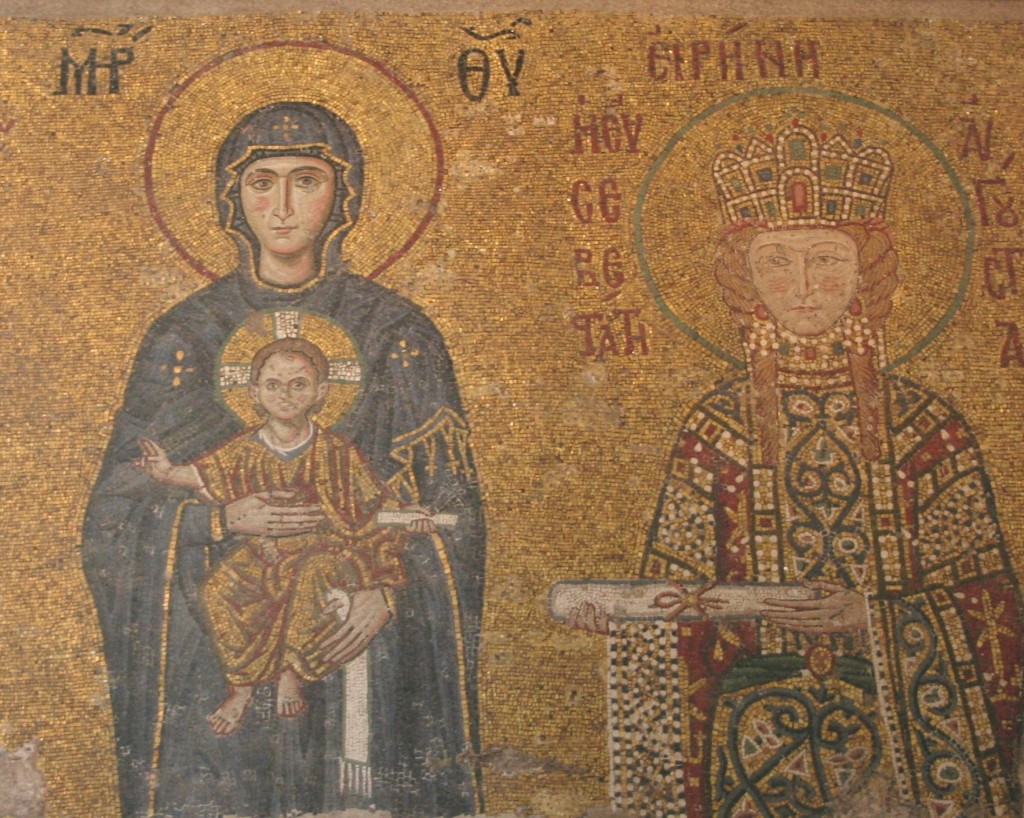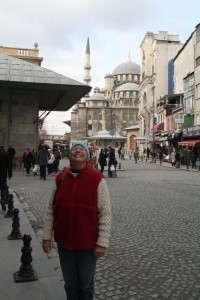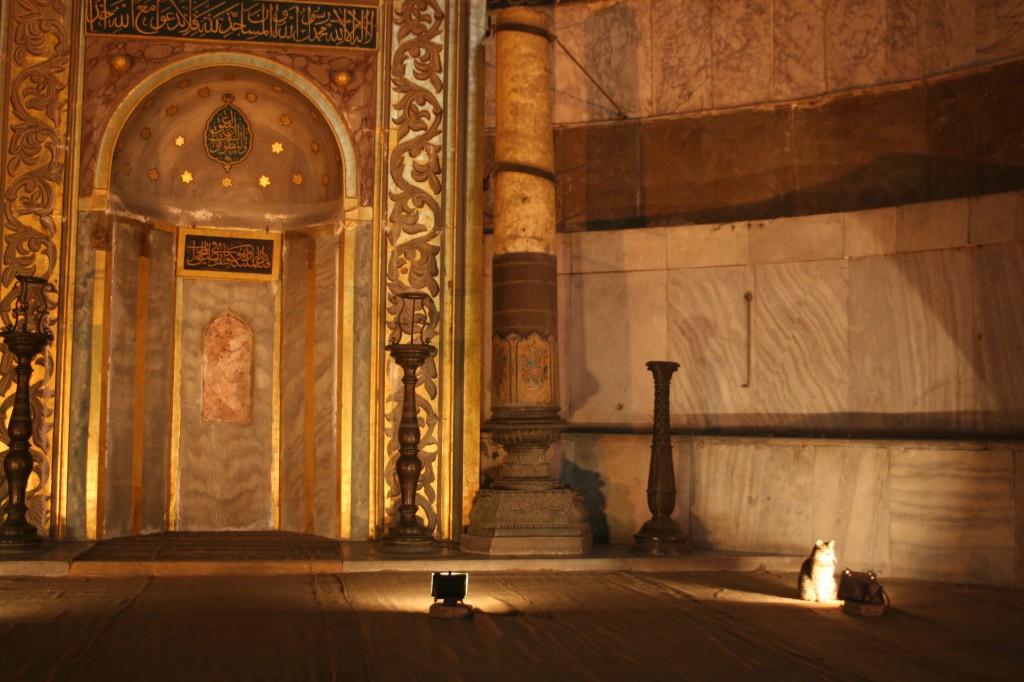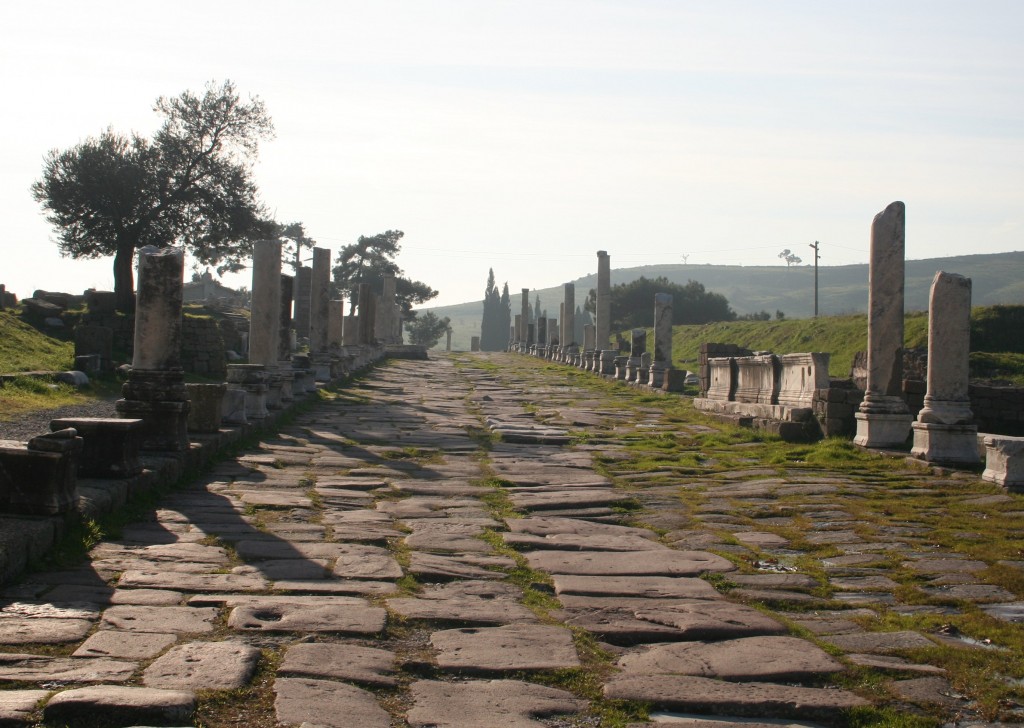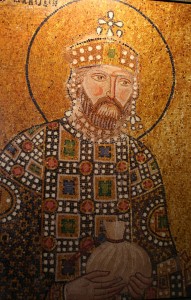
One of my favorite memories of Istanbul happened during our first morning as my friend Marian and I walked with our guide through the historic center of the city. As we strolled, he read the buildings and structures that we passed as if they were a history book, pointing out their Egyptian, Greek, Roman, Byzantine, Ottoman and modern elements. Here were the remains of a Roman hippodrome, there an obelisk from Luxor, there an ornately decorated Ottoman palace standing next to an Art Nouveau apartment building. It was clear that in Istanbul, within the space of a few steps one can travel a thousand years (here’s perhaps the best indication of the city’s age: its New Mosque was built in 1597).
So a brief sketch of the city’s tangled history is in order, just to set the stage for further ramblings. As maybe you remember from your high school geography class, Istanbul is the only major city to span two continents. Part lies in Europe and part in Asia, and thus the city from its beginnings marked the meeting of East and West.
While there was a small settlement called Byzantium in this location beginning in 667 B.C., the city came into its own when it was re-named Constantinople in 324 A.D. to honor the Roman emperor Constantine. It grew in stature and importance in part because of its extraordinarily favorable location—at the meeting point between continents but also at the site of one of the world’s best deep-water harbors, the Golden Horn. Whoever ruled Constantinople controlled both the land and sea routes between Europe and Asia. The Emperor Constantine was no fool in choosing it as his new capital, dubbing it the New Rome.
As the wheel of history turned, the Roman Empire was replaced by the Byzantine Empire and Constantinople grew to become the largest and wealthiest city in the world. (To this day the word Byzantium has a shimmer of gold about it, doesn’t it?) Then after the capture of the city by Muslim forces in 1453, Constantinople became the capital of the Ottoman Empire. The fall of the city sent shock waves throughout the Christian world, as the great cathedral of the East, Hagia Sophia, became a mosque and Constantinople became Istanbul (though it would continue to be known for centuries by its former name in the West). The Ottoman Empire lasted until the end of World War I, with the last sultan exiled in 1922. In 1923 Turkey implemented its first constitution and the Republic of Turkey was born. Under the visionary leadership of the leader Ataturk, the country moved into the modern age.
But while Istanbul is a pulsing, dynamic metropolis today, full of cars and gleaming office towers and the assorted accoutrements of high-tech life, just beneath the surface are those interwoven strands of history, ribbons of gold that shimmer if you walk slowly and attentively through its busy streets.


